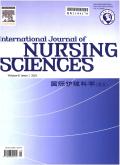灌顶干预对镰状细胞病患者自我效能感和自我护理能力的影响:一项随机对照试验
IF 3.1
3区 医学
Q1 NURSING
引用次数: 0
摘要
目的探讨灌顶干预对镰状细胞病(SCD)患者自我效能感和自我护理能力的影响。方法采用随机对照试验[NCT06296654]。采用整群抽样技术,于2022年2月至5月在巴林的两家卫生中心共招募了76名患者,随机分为干预组(n = 38)和对照组(n = 38)。干预组采用结构化小组讨论、个体化咨询(5A模式:评估、建议、同意、协助、安排)、随访等方式实施灌顶干预,对照组采用常规健康教育。在治疗前和干预后1个月分别对两组患者进行镰状细胞自我效能量表(SCSES)和自我照顾能动性评定量表(ASA-R)的测量。结果共68例患者完成研究,其中干预组36例,对照组32例。干预后,干预组SCSES评分为37.0(35.0,39.8),高于对照组28.0 (25.2,32.0)(U =−6.121,P <;0.001);干预组ASA-R评分为61.0分(58.3分,65.0分)高于对照组49.0分(43.3分,53.0分)(U = 0.653, P <;0.001)。结论采用5As模型的赋权干预能有效提高SCD患者的自我效能感和自我护理能力。本文章由计算机程序翻译,如有差异,请以英文原文为准。
Effect of empowerment-based interventions on self-efficacy and self-care capacity among patients with sickle cell disease: A randomized controlled trial
Objective
This study aimed to investigate the effect of empowerment-based interventions on self-efficacy and self-care capacity among adults with sickle cell disease (SCD).
Methods
A randomized control trial was conducted [NCT06296654]. A total of 76 patients were recruited by using a cluster sampling technique in the two health centers in Bahrain from February to May 2022 and randomly allocated to the intervention group (n = 38) or control group (n = 38). The intervention group received the empowerment-based intervention implemented through structured small-group discussion sessions, individualized consultations (5A model: assess, advise, agree, assist, and arrange), and follow-up sessions, while the control group received routine health education. The Sickle Cell Self-Efficacy Scale (SCSES) and the Appraisal of the Self-Care Agency Scale-Revised (ASA-R) were measured at baseline and one month after the intervention among two groups of patients.
Results
A total of 68 patients completed the study (36 patients in the intervention group and 32 patients in the control group). After the intervention, the score of SCSES in the intervention group was 37.0 (35.0, 39.8) higher than the control group 28.0 (25.2, 32.0) (U = − 6.121, P < 0.001); the score of ASA-R in the intervention group was 61.0 (58.3, 65.0) higher than the control group 49.0 (43.3, 53.0) (U = 0.653, P < 0.001).
Conclusion
Adopting the empowerment-based intervention using the 5As model effectively improves self-efficacy and self-care capacity among patients with SCD.
求助全文
通过发布文献求助,成功后即可免费获取论文全文。
去求助
来源期刊

International Journal of Nursing Sciences
Nursing-Nursing (all)
CiteScore
6.10
自引率
2.60%
发文量
408
审稿时长
25 days
期刊介绍:
This journal aims to promote excellence in nursing and health care through the dissemination of the latest, evidence-based, peer-reviewed clinical information and original research, providing an international platform for exchanging knowledge, research findings and nursing practice experience. This journal covers a wide range of nursing topics such as advanced nursing practice, bio-psychosocial issues related to health, cultural perspectives, lifestyle change as a component of health promotion, chronic disease, including end-of-life care, family care giving. IJNSS publishes four issues per year in Jan/Apr/Jul/Oct. IJNSS intended readership includes practicing nurses in all spheres and at all levels who are committed to advancing practice and professional development on the basis of new knowledge and evidence; managers and senior members of the nursing; nurse educators and nursing students etc. IJNSS seeks to enrich insight into clinical need and the implications for nursing intervention and models of service delivery. Contributions are welcomed from other health professions on issues that have a direct impact on nursing practice.
 求助内容:
求助内容: 应助结果提醒方式:
应助结果提醒方式:


